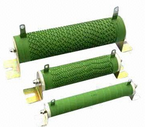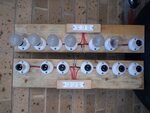mike buba
Member level 2
Hi all,
I want to test three-phase inverter from Pmin to Pnominal.
The simplest, but the most expensive solution is by using laboratory variable load.
Another solution is by using arrangement of three-phase loads and switches (something often used in simulations).
Inverter back-to-back test is out of the question since I have only one inverter.
What about three-phase induction motor?
At no load I can get current corresponding to the reactive power (i.e. losses). But how can I increase the torque (current) of the motor?
I need constant voltage and frequency output (3×400 V, 50 Hz).
I am not sure how B2B with two motors supplied from the same inverter would work, but I assume it has to do something with frequency (speed) control.
Is there anything else I can use as a load for the motor shaft.
Or any other load/solution. But in the price range of a motor.
btw. inverter (motor) power is up to 2 kW (≈ 2 HP)!
I want to test three-phase inverter from Pmin to Pnominal.
The simplest, but the most expensive solution is by using laboratory variable load.
Another solution is by using arrangement of three-phase loads and switches (something often used in simulations).
Inverter back-to-back test is out of the question since I have only one inverter.
What about three-phase induction motor?
At no load I can get current corresponding to the reactive power (i.e. losses). But how can I increase the torque (current) of the motor?
I need constant voltage and frequency output (3×400 V, 50 Hz).
I am not sure how B2B with two motors supplied from the same inverter would work, but I assume it has to do something with frequency (speed) control.
Is there anything else I can use as a load for the motor shaft.
Or any other load/solution. But in the price range of a motor.
btw. inverter (motor) power is up to 2 kW (≈ 2 HP)!

